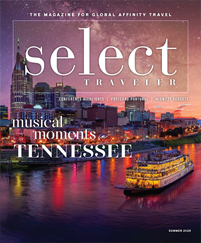Tour Company A offers a weeklong trip in Europe for $1,500 per person. Tour Company B sells a weeklong trip to the same destinations, but charges $3,000 per person. What accounts for the difference?
When it comes to packaged travel, trips are not all created equal. Dozens of variables go into determining the price of a trip, and most tour companies carve out niches for themselves at specific places on the value spectrum. Some operators are known for budget trips, and others aim for high-quality, but not fancy, products. And then there’s a tier of companies that specialize in luxurious experiences and charge a premium for them.
Over the next three issues of Select Traveler, we’re going to explore trip pricing by analyzing what travel planners can expect to get at three different points on this spectrum. In this issue, we begin with value tours, which offer attractive low pricing that makes them accessible to a wide variety of travelers.
There’s nothing wrong with these budget-friendly trips; they might be just the right fit for your group. Here’s an overview of the value tour experience in 10 essential aspects of group trips.
1) Destinations
The most important thing to know about budget tour companies is that they are built on a low-margin, high-volume business model. As such, they focus most of their efforts on destinations that are proven sellers. So if you want to take your group on an inexpensive trip to a popular destination such as New York; Branson, Missouri; Ireland; or Italy, you’re likely to find a budget-brand tour company that offers aggressively priced packages there. These companies are much less likely to sell trips to small, off-the-beaten-path cities or exotic destinations.
2) Seasonality and Timing
To keep overall prices low, budget tour operators rely on getting the best rates possible from their suppliers. This often means avoiding crowds, which drive up prices with higher demand, and offering trips during off-peak periods. In some popular weekend destinations, these operators will sell Monday-through-Friday trips. In places that are most popular in summer or winter, a budget operator is likely to offer trips in the fall or spring. This isn’t a universal rule, though; it’s possible to take a budget tour during peak periods, but the prices will be higher than off-season departures.
3) Accommodations
Hotel accommodations account for a large portion of tour expenses, so this is an area where budget travel brands are likely to look for savings. When traveling on a low-price tour, you can expect to stay in limited-service chain hotels or similar local properties that are clean and comfortable but lack some amenities. And these properties will likely be far outside the downtown area or tourist district, maybe even in a nearby town or suburb where hotels are substantially cheaper.
4) Meals
The quality and quantity of food and beverage can have a big impact on the cost of a tour. Budget tour companies keep their prices low by limiting the number of meals included in their packages. While free continental breakfast will usually be offered at hotels, travelers can expect to pay for their own lunches most days. There may be a handful of included group dinners, but these probably won’t be at high-end restaurants and won’t include drinks.
5) Activities
Though they aren’t as expensive as hotels or meals, the cost of museum admissions, concert tickets and other attraction and activity fees over the course of a tour can add up. To keep prices low, budget operators pack their itineraries with as many free or low-cost activities as possible and rely heavily on driving or walking tours. They also include more free time, during which travelers can visit attractions at their own expense, and may offer certain activities or experiences as optional excursions at additional cost.









